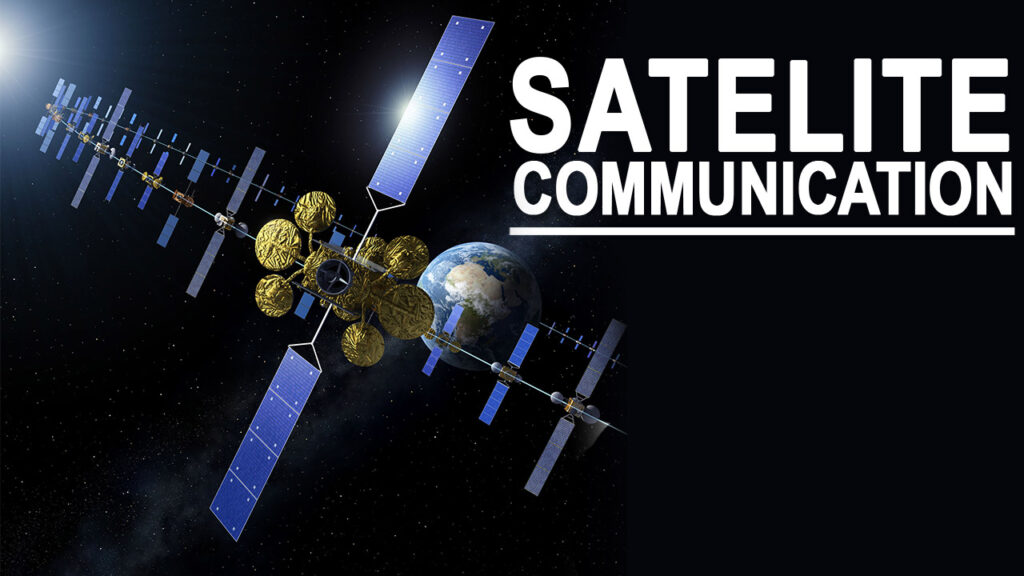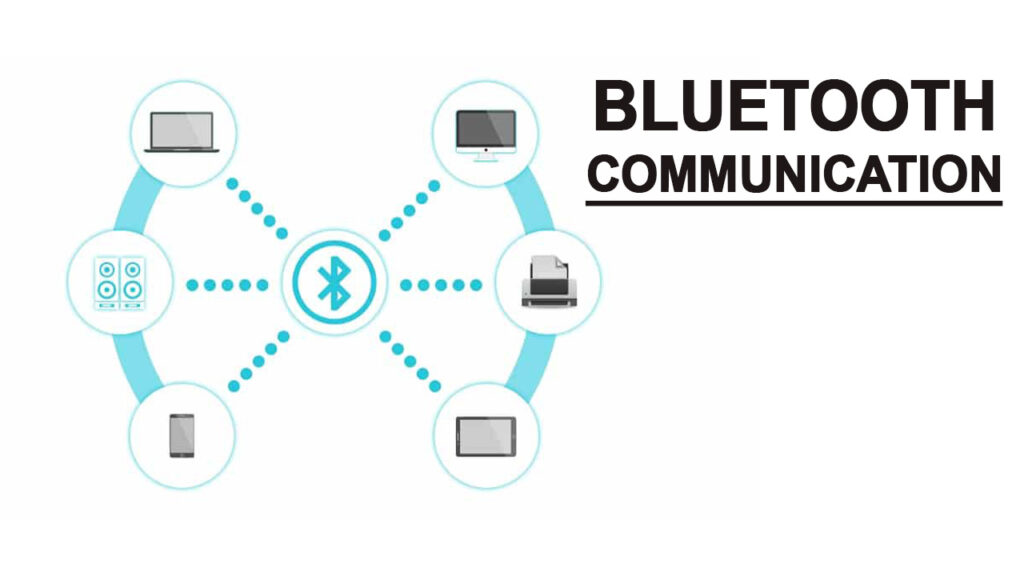Wireless Communication is the quickest developing and most dynamic mechanical region in the communication field. This is a technique for sending data starting with one point then onto the next, without using any connections like wires, cables, or any physical medium.
For the most part, in a communication system, data is sent from transmitter to receiver that is set over a restricted distance. With the assistance of it, the transmitter and receiver can be set at any place between a few meters to a couple of thousand kilometers (Satellite Communication).
We all know that at present we are growing with a wide range of wireless communication. A portion of the ordinarily used wireless communication Systems in our daily life are Mobile Phones, GPS systems, Remote Control, Bluetooth Audio, and Wi-Fi, etc.
What is Wireless Communication?
The term wireless communication was presented in the nineteenth century and its innovation has created over the subsequent years. In this innovative technology, the data can be sent through the air without requiring any cables or wires or other electronic channels, by using electromagnetic waves like Infrared Waves, Radio Frequency, Satellite, and so on.
Who Invented Wireless Communication?
In mid 1890’s, an Italian inventor and engineer Guglielmo Marconi developed, demonstrated and marketed the first successful long-distance wireless telegraph and in 1901 broadcast the first transatlantic radio signal. His company’s Marconi radios ended the isolation of ocean travel and saved hundreds of lives, including all of the surviving passengers from the sinking Titanic. In 1909 he shared the Nobel Prize in Physics for his radio work.
What are Electromagnetic Waves?
Electromagnetic Waves convey the electromagnetic energy of the electromagnetic field through space. Electromagnetic Waves include gamma rays (γ – rays), X – rays, UV rays, visible light, infrared rays, microwave rays, and radio waves. Electromagnetic Waves (generally Radio Waves) are utilized in wireless communication to convey the signals.
An Electromagnetic Wave comprises of both electric and magnetic fields as time changing sinusoidal waves. Both these fields are oscillating perpendicular to one another and the course of the spread of the Electromagnetic Wave is again perpendicular to both these fields.
Numerically, an Electromagnetic Wave can be described utilizing Maxwell’s equations. An Electromagnetic Wave is appeared beneath where the Electric Field is acting in the Y-axis, the magnetic field is acting in the Z-axis and the Electromagnetic Wave propagates in X-axis.

What Are The Four Wireless Communication Network Categories
| TYPE | RANGE | STANDARD |
| Personal Area Network (PAN) | For only one person within the range | Bluetooth, IR |
| Local Area Network (LAN) | Within a small space like in a building or in a campus | WiFi (IEEE 802.11) |
| Metropolitan Area Network (MAN) | Within a city | WiMAX (IEEE 802.15) |
| Wide Area Network (WAN) | Within the whole world | Cellular (LTE, VOLTE, UMTS) |
What are The Main Differences Between Wired And Wireless Communication
| PARAMETER | WIRELESS NETWORK | WIRED NETWORK |
| Communication Medium | Through Air | Copper, Fiber, Optic |
| Standard | 802.11 | IEEE 802.3 |
| Bandwidth | Lower than wired network | Upto 1 Gbps |
| Reliability | Lower than wired network | Very High |
| Delay | High | Low |
| Working Principle | CSMA/CA hence reduces possibility of collision be avoiding collision from happening | CSMA/CD operates by detecting the occurrence of a collision |
| Installation | Less labor, cost, time and maintenance | high manpower, cost, time and maintenance |
| Security | Due to wireless, it can be possible to be hacked | Very High |
| Mobility | Higher | Limited |
Why We Use Wireless Communication?
When wired communication can do a large portion of the tasks that a wireless communication can, for what reason do we need wireless communication? The essential and significant advantage of it is portability.
Aside from portability, it additionally offers flexibility and usability, which makes it progressively well known day by day. wireless communication like mobile communication can be made at any place and whenever with an impressively high throughput execution.
Another significant point is the infrastructure. The arrangement and installation of infrastructure for a wired communication network is a costly and tedious activity. The infrastructure for this Communication is so simple to install and also it is a cheap communication system.
In crisis circumstances and remote areas, where the arrangement of wired communication is troublesome, wireless communication is a practical choice.
Advantages of Wireless Communication
- Any data or information can be transmitted faster and with a high speed
- Maintenance and installation is less cost for these networks.
- The internet can be accessed from anywhere wirelessly
- It is very helpful for workers, doctors working in remote areas as they can be in touch with medical centers.
Disadvantages of Wireless Communication
- An unauthorized person can easily capture the wireless signals which spread through the air.
- It is very important to secure the wireless network so that the information cannot be misused by unauthorized users
Types of Wireless Communication
Nowadays, the world needs mobile phones for calling, web, multimedia, etc. Everything of these administrations must be made accessible to the client in a hurry for example while the client is mobile. With the assistance of these wireless communication services, we can transfer voice, information, recordings, pictures, etc.
Wireless communication systems additionally offer various types of assistance like video conferencing, cell phone, paging, TV, Radio, and so on. Because of the requirement for communication services, various kinds of wireless communication systems are created. A portion of the significant wireless communication Systems accessible today are
Satellite Communication
Satellite communication is one sort of independent wireless communication technology, it is broadly spread everywhere throughout the world to permit users to remain connected at any place on the earth. At the point when the signal is sent close to the satellite at that point, the satellite intensifies the signal and sent it back to the antenna receiver which is situated on the surface of the earth. Satellite communication contains two primary parts the space segment and the ground segment. The ground segment comprises fixed or mobile transmission, reception and ancillary hardware, and the space segment, which predominantly is simply the satellite. For more details go to Satellite Communication.

Infrared Communication
Infrared communication communicates with information in a system through IR radiation. IR is electromagnetic energy at a frequency that is longer than that of red light. It is utilized for security control, TV controlling, and short-range communication. In the electromagnetic spectrum, IR radiation lies between microwaves and visible light. In this way, they can be utilized as a source of communication.
For successful infrared communication, an IR transmitter and a photodiode are required. The IR transmitter communicates the IR signal as non-visible light, that is caught and spared by the photodiode. So the information between the source and the objective is transferred along these lines. The source and goal can be cell phones, TV, security systems, PCs, and so on support with wireless communication. For more details go to Infrared Communication.
Here is also a small project about Infrared Communication Security System

Broadcast Radio
The principal wireless communication technology is open radio communication to search out worldwide use, it still everything fills a need these days. Small multichannel radios grant a client to talk over short separations, while resident’s band and oceanic radios offer wireless communication for short distances.
For the most part a sound broadcasting administration, radio broadcasts sound through the air as radio waves. The radio uses a transmitter that is utilized to communicate the data as radio waves to a receiving antenna(Different Types of Antennas). To communicate basic programming, stations are related to the radio N/W’s. The broadcast happens either in simulcast or syndication or both. Radio broadcasting might be done by means of cable FM, the net, and satellites. A broadcast sends data over long significant distances at up to two megabits/sec (AM/FM Radio).
Radio waves are electromagnetic signals, that are transmitted by a reception antenna. These waves have totally unique frequency portions, and you will be prepared to get an audio signal by changing it into a frequency segment.
For instance, you can take a radio station. At the point when the RJ says you are listening to 92.7 BIG FM, what he really implies is that signals are being broadcasted at a frequency of 92.7 megahertz, which progressively implies the transmitter at the station is periodic at a frequency of 92.700,000 cycles/sec.
Microwave Communication
Microwave communication is an effective type of communication. Mainly this communication uses radio waves, and the wavelengths of radio waves are measured in centimetres. In this communication, the data can be transferred using two methods. One is the satellite method and the other is the terrestrial method.
In the satellite method, the data can be transmitted through a satellite, that orbit 22,300 miles above the earth. Stations on the earth send and receive data signals from the satellite with a frequency ranging from 11 GHz to 14 GHz and with a transmission speed of 1 Mbps to 10 Mbps. In the terrestrial method, in which two microwave towers with a clear line of sight between them are used. Ensuring no obstacles disrupt the line of sight. So it is used often for the purpose of privacy. The frequency range of the terrestrial system is typically 4 GHz to 6 GHz and a transmission speed is usually 1 Mbps to 10 Mbps.
The main disadvantage of microwave signals is, they can be affected by bad weather, especially rain.

WiFi Communication
WiFi is a low-power wireless communication system that is used by various electronic devices like smartphones, laptops, etc. In this setup, a router works as a communication hub wirelessly. This network allows users to connect only within close proximity to a router. WiFi is very common in networking applications which affords portability wirelessly. These networks need to be protected with passwords for the purpose of security, otherwise, they will access by others.

Cell Phone Communication
The headway of the cell phone network is listed by generation. Numerous clients communicate over a single frequency band through cell phones. Cellular and cordless telephones are two instances of gadgets that utilize wireless signals. Normally, cell phones have a bigger scope of networks to give coverage. But, cordless telephones have a restricted range. Like GPS, a few phones utilize signals from satellites to communicate.

Bluetooth Communication
The main function of Bluetooth technology is that permits you to connect various electronic devices wirelessly to a system for the transferring of data. Cell phones are connected to hands-free earphones, mouse, and wireless keyboard. By using the Bluetooth device the information from one device to another device. This technology has various functions and it is used commonly in the wireless communication market.

Applications of Wireless Communication
Applications of wireless communication involve security systems, television remote control, WiFi, Cell phones, wireless power transfer, computer interface devices, and various wireless communication-based projects.
Visit our site for more awesome tutorials on Electro Gadget.